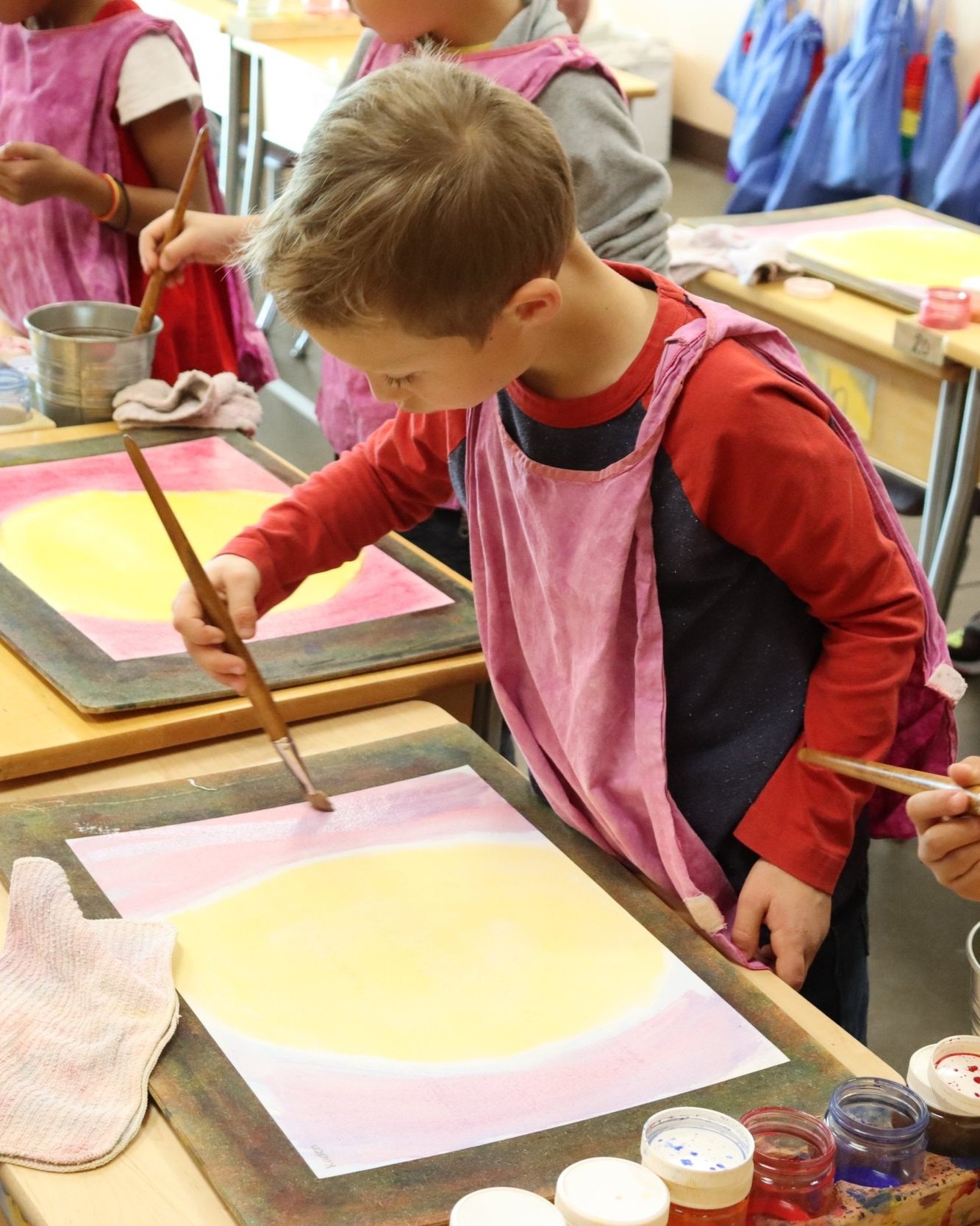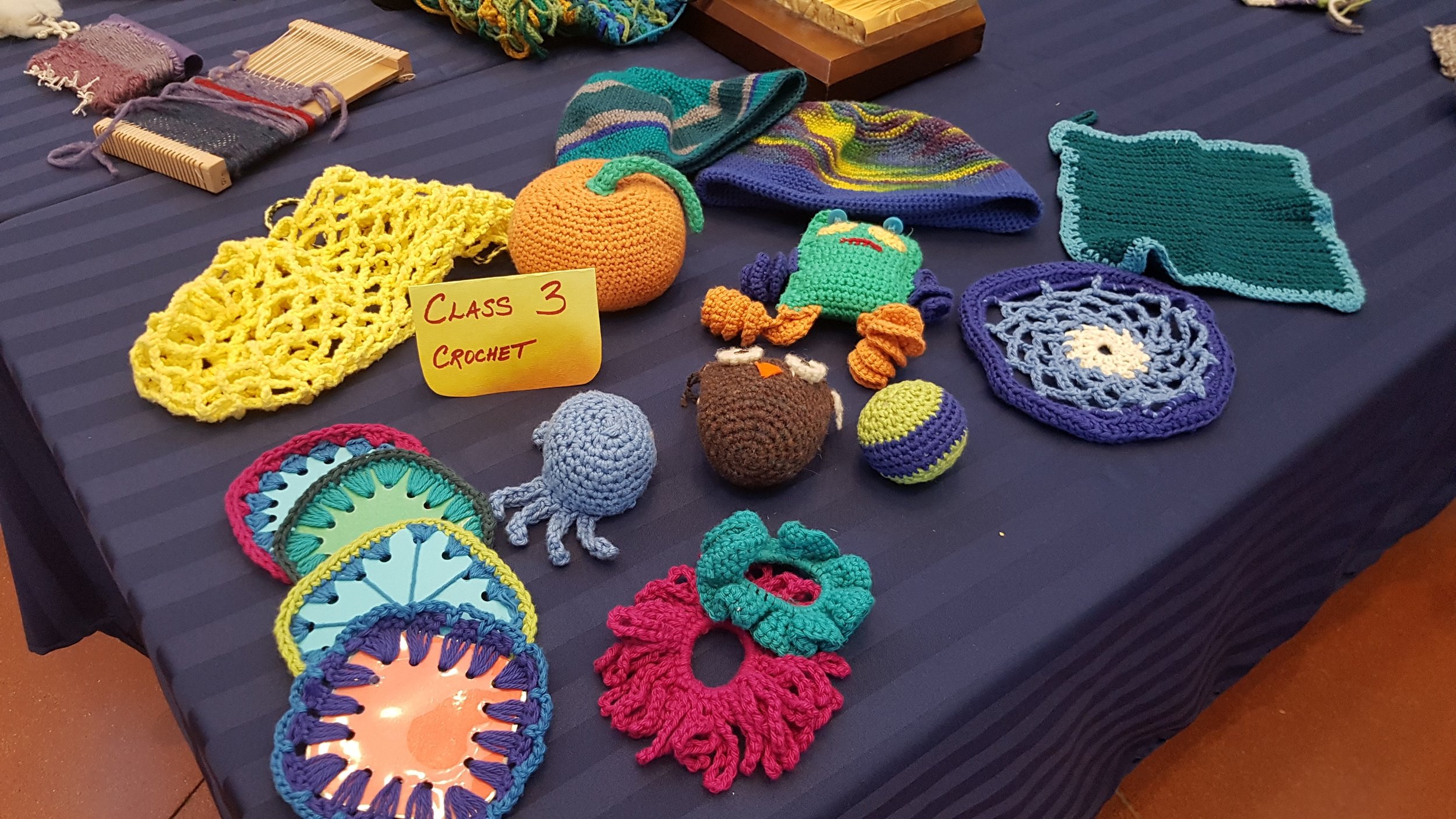
Music And
Arts
An artistic approach to education
At CWS, art is seen as an essential instructional tool in every subject and at every grade level. In the early years, artistic work precedes academic work. Instruction in drawing, painting, and modeling happens daily. The first medium the children use for modeling is beeswax, a natural material that warms to the touch. Clay is introduced in the upper elementary grades.
Music is a constant means of communication and expression in our classrooms and is the 'glue' that holds us together as we go through the seasons and festivals of the year.
Choral & Instrumental
Singing in a group fosters cooperation with an interest in others. In addition to the musical activities with the class teacher, children in Grades One through Six also have music class twice per week. Here they further explore choral singing and rhythmical instruments, notation work and part-singing.
In Grade One the students begin to learn the recorder with their class teacher. In third grade, they begin playing the ukulele. Recorder ensemble playing is also introduced in upper elementary, and continues into the junior high. In Grade Seven, the children choose a wind or brass instrument and join the Junior High Band.
Throughout all the grades, there are regular opportunities for choral and instrumental performance at recitals, school assemblies, and seasonal celebrations.
Drama
Yearly class plays provide an incredible experience for the students, as individuals and collaborators. Memorizing lines hones memory capacities, speaking clearly in front of others builds confidence. The students work together, problem-solve together to make props and build sets, and finesse the details of stage management. These factors work together simultaneously to strengthen the social fabric of the class through shared experience, building trust and deepening relationships. It truly is a team effort like no other.
Handwork & Practical Arts
Learning handwork and practical arts is empowering. The students' creative powers are stimulated, and they learn to trust their strengths and capacities in new ways: they can create and transform objects! Yarn becomes a scarf, wood becomes a tool, and copper becomes a flower.
Handwork
Handwork teaches children to carry through with a task, a practice that is essential to the development of thinking. In Grade One, students learn to knit, developing their hand-eye coordination. In grade three, the students crochet a more detailed project like a bag or a winter hat. Students complete many beautiful projects that are of a practical nature yet each piece is always done with an appreciation for and development of aesthetic qualities.
Practical Arts
The formal woodworking curriculum begins in Grade Five. Students develop a feel for their material by rasping and sanding a darning egg out of a square block of wood, then move on to concave shapes like bowls. Grade Six projects, typically forks and spoons, begin to reflect the style of individual children. Middle School students build furniture, usually chairs or stools, and are introduced to power tools.
Visual Arts
With drawing and painting, children in the early grades begin to bring forms out of the colours: mountains, trees, horses, people. In first grade children encounter the letters of the alphabet in the form of pictures. A picture of a fish may be transformed into the letter “F.” In math lessons, children sometimes learn fractions and multiplication tables through the use of form drawings that illustrate the relationships between various numbers. Students often draw or paint themes from stories they hear in Main Lesson as a way of experiencing their lessons more deeply.










